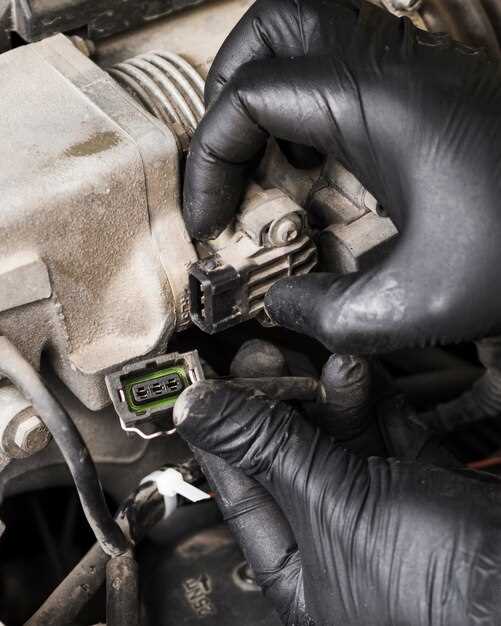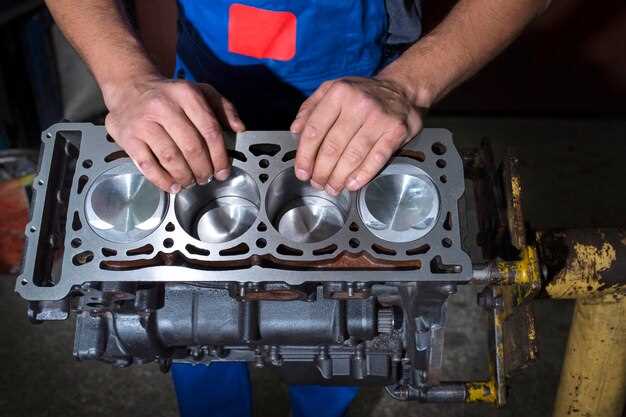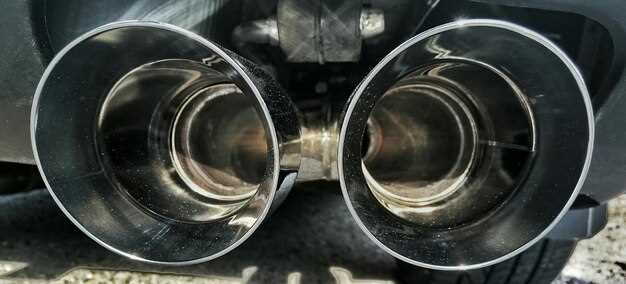
Supercars are not only symbols of luxury and speed but also embody cutting-edge technology aimed at reducing emissions. Among the critical components responsible for achieving lower emissions are the catalytic converters. These devices play a vital role in the exhaust system, converting harmful pollutants into less harmful gases before they are released into the atmosphere. Maintaining these components is essential not only for environmental compliance but also for optimizing performance.
Over time, catalytic converters can become coated with carbon deposits, leading to decreased efficiency and potential damage to the engine. Regular maintenance is crucial to prevent deterioration and ensure that the engine runs smoothly. From inspecting for clogs to monitoring the overall health of the exhaust system, supercar owners must adopt proactive measures to keep their catalytic converters in peak condition. The cost of neglect can result in significant performance loss and increased emissions, contradicting the very purpose of these sophisticated vehicles.
Cars designed for high performance often operate under extreme conditions, which can exacerbate wear and tear on the catalytic system. Understanding how to care for this component can extend the lifespan of the supercar and preserve its iconic status. By prioritizing the maintenance of their catalytic converters, supercar enthusiasts can enjoy both exhilarating speed and responsible driving.
Choosing the Right Catalytic Converter for Your Supercar

Selecting the appropriate catalytic converter for your supercar is crucial for maintaining optimal performance and compliance with emissions regulations. Different supercars have unique engine configurations and power outputs, which influence the type of converter needed. It’s essential to consider factors such as flow rate, size, and material composition when making your choice.
High-performance supercars often require catalytic converters designed to handle increased exhaust flow without causing backpressure. Aftermarket converters may be suitable for enhancing performance but must meet emissions standards to avoid fines or registration issues. Look for converters that offer a balance between high flow capacity and efficient filtration to retain the necessary emissions control.
Material selection plays a vital role in the longevity and effectiveness of catalytic converters. Options like platinum, palladium, and rhodium are commonly used in the manufacturing process. Ensure that the converter you choose has a durable build quality that can withstand the high temperatures generated by supercar engines.
Furthermore, compatibility with your specific make and model is essential. Custom fabrication might be necessary for certain supercars, ensuring that the catalytic converter fits seamlessly within the existing exhaust system. Consult with performance specialists to determine the best converter options available for your vehicle.
Finally, regular maintenance and inspections of the catalytic converter are critical to ensure its efficiency and longevity. Signs of failure such as a noticeable decrease in performance or increased emissions should prompt immediate attention. By investing time and resources into selecting and maintaining the right catalytic converter, you can keep your supercar performing at its best while adhering to necessary environmental standards.
Regular Inspection Techniques to Ensure Optimal Performance
Regular inspection of catalytic converters in supercars is crucial to maintaining their optimal performance and ensuring lower emissions. Effective inspection techniques can help identify potential issues before they become significant problems, thereby extending the life of the catalytic system.
One of the primary techniques involves visually inspecting the catalytic converter for any damage or signs of excessive wear. Look for cracks, dents, or discoloration, which may indicate overheating or failure. Any physical deformities could hinder the converter’s ability to process exhaust gases effectively.
Another vital method is to monitor exhaust emissions through diagnostic tools. Devices such as OBD-II scanners can provide information about the functionality of the catalytic converter by checking for error codes that may signal malfunctions. Trouble codes related to catalytic efficiency can prompt further investigation into the system.
Additionally, periodic analysis of exhaust gases can reveal the effectiveness of the catalytic converter. Techniques such as gas analyzers can measure pollutants like carbon monoxide, hydrocarbons, and nitrogen oxides, helping technicians assess whether emissions remain within acceptable limits. A spike in these readings may indicate that the catalytic converter is underperforming.
Finally, it’s essential to inspect the oxygen sensors, as they play a vital role in regulating the air-fuel mixture and ensuring the catalytic converter operates efficiently. A malfunctioning oxygen sensor can lead to improper combustion, resulting in increased emissions and potentially damaging the catalytic converter.
Implementing these regular inspection techniques will not only ensure the efficient operation of the catalytic converters in supercars but also contribute significantly to environmental protection by minimizing harmful emissions.
Common Issues Affecting Catalytic Converters in High-Performance Engines
Catalytic converters play a crucial role in managing emissions from high-performance engines. However, their effectiveness can be compromised by several common issues:
- Overheating: High-performance engines often operate at elevated temperatures, leading to excessive heat buildup in the catalytic converter. This can result in thermal degradation of the catalyst material, reducing its efficiency.
- Clogging: The accumulation of unburned fuel, carbon deposits, and other contaminants can lead to clogging within the catalytic converter. This restricts exhaust flow and negatively impacts engine performance and emissions.
- Damaged Catalyst: Physical damage can occur due to debris in the exhaust system or manufacturing defects. A damaged catalyst can lead to a breakdown in the converter’s structure, resulting in inefficient emissions processing.
- Contamination: High-performance engines that use aftermarket fuel additives or oils can introduce contaminants that poison the catalytic converter. This can cause irreversible damage, diminishing its ability to convert harmful emissions.
- Oxygen Sensor Failure: Malfunctioning oxygen sensors can lead to improper fuel mixture adjustments, causing excess fuel to flow into the catalytic converter. This can accelerate clogging and overheating issues.
To maintain optimal performance and emissions standards, regular inspections and proactive maintenance of catalytic converters in supercars are essential. Awareness of these issues can help ensure the longevity and efficiency of the emissions system in high-performance vehicles.
Impact of Modifications on Catalytic Converter Functionality
Modifications to supercars, such as aftermarket exhaust systems, engine tuning, and performance chips, can significantly impact the functionality of the catalytic converter. These components are designed to minimize harmful emissions by converting toxic gases into less harmful substances. However, many modifications can interfere with this essential process.
One of the primary effects of modifying an exhaust system involves altering exhaust flow. High-performance exhaust systems often reduce backpressure to enhance engine efficiency. While this can improve horsepower, it may also affect the temperature and flow rate of exhaust gases entering the catalytic converter. If the gases move too quickly through the converter, there is insufficient time for the catalytic reactions to occur, which can lead to increased emissions and reduced effectiveness.
Moreover, changes in engine tuning can alter the air-fuel mixture, putting additional stress on the catalytic converter. A lean or overly rich mixture can lead to excessive heat or incomplete combustion, both of which can degrade the catalyst material. This degradation can result in a failure to convert pollutants effectively, causing potential damage to the converter and other exhaust components.
Furthermore, the introduction of performance-enhancing fuels can create similar challenges. Certain fuel blends may contain higher levels of sulfur or other compounds that can poison the catalyst, reducing its lifespan and functionality. It is crucial for supercar owners to consider these factors when making modifications, as they can inadvertently compromise the catalytic converter’s ability to manage emissions.
In conclusion, while modifications can enhance performance and driving experience, they may jeopardize the catalytic converter’s role in emission control. Owners must weigh the benefits of performance upgrades against the potential risks to their vehicle’s environmental compliance and overall functionality.
Best Practices for Cleaning and Maintenance Procedures
To ensure the optimal performance of catalytic converters on supercars, regular cleaning and maintenance are essential. Begin with routine inspections to identify any signs of damage or excessive buildup of carbon deposits. Use a professional-grade exhaust cleaner specifically designed for catalytic converters, as these products effectively dissolve contaminants without harming the converter itself.
When performing cleaning, ensure that the vehicle is on a level surface and allow the exhaust system to cool down completely. Follow the manufacturer’s instructions for applying the cleaner, often involving a specific dilution ratio and application method. It’s recommended to perform this cleaning after every 5,000 to 7,500 miles for optimal results.
After cleaning, inspect the catalytic converter for signs of wear or abnormal wear patterns. Look for discoloration, rust, or physical damage that may indicate deeper issues within the exhaust system. Addressing these issues promptly can prevent more severe problems and extend the life of the catalytic converter.
Additionally, consider implementing a fuel system cleaner every few oil changes. This will help reduce carbon buildup within the engine and the catalytic converter, promoting a cleaner burn and enhancing overall performance. Adopting a high-quality fuel can also make a significant difference in the longevity and efficiency of the catalytic converter.
Finally, always ensure that the exhaust system is free from leaks. A leaking exhaust can alter the temperature and flow dynamics, adversely affecting the performance of the catalytic converter. Regular inspections will help maintain the integrity of the entire exhaust system, thereby supporting the catalytic converter’s function effectively.
Understanding Emissions Standards and Compliance for Supercars

Emissions standards are regulations set by governments to control the amount of harmful substances released into the atmosphere from vehicles. For supercars, which often prioritize performance, adhering to these standards can be challenging while maintaining high levels of power and efficiency. Compliance with emissions regulations is crucial not only for environmental protection but also for the marketability of supercars in various regions.
One of the primary components in the emissions reduction strategy for supercars is the catalytic converter. This device plays a vital role in converting toxic gases produced during combustion into less harmful emissions. The efficiency and effectiveness of a catalytic converter directly influence a vehicle’s ability to meet stringent emissions standards.
Supercar manufacturers invest heavily in advanced technologies to enhance the performance of catalytic converters. High-performance materials, such as platinum, palladium, and rhodium, are often employed to maximize the catalytic reaction and maintain compliance with regulations. However, it is essential to balance these improvements with the overall performance of the vehicle, ensuring that supercars not only adhere to emissions standards but also deliver the exhilarating driving experience expected by enthusiasts.
Different regions have varying regulations concerning emissions. For instance, the European Union has stringent Euro standards, while the United States follows the Environmental Protection Agency (EPA) guidelines. Manufacturers must design their supercars to meet these diverse requirements, which may involve continuously updating technologies and systems in their vehicles.
Additionally, compliance with emissions standards involves regular testing and monitoring of catalytic systems. Supercar owners need to ensure that their vehicles are properly maintained to avoid exceeding permissible emissions levels. Neglecting catalytic converter health not only risks failing emissions tests but can also lead to reduced performance and even damage to the engine over time.
In conclusion, understanding and adhering to emissions standards are essential for the manufacturing and ownership of supercars. The incorporation of efficient catalytic converters and the commitment to ongoing compliance play critical roles in maintaining the environmental responsibility of these high-performance vehicles while preserving their unique appeal in the automotive market.
